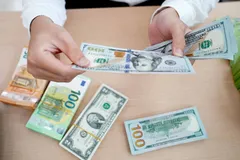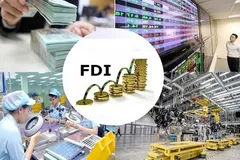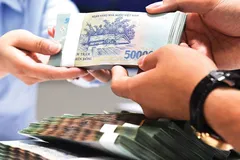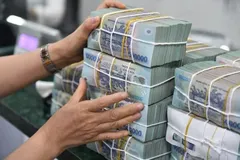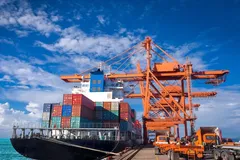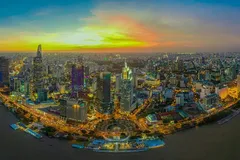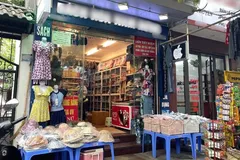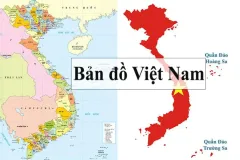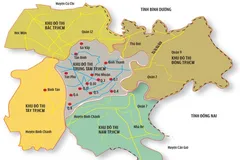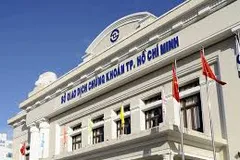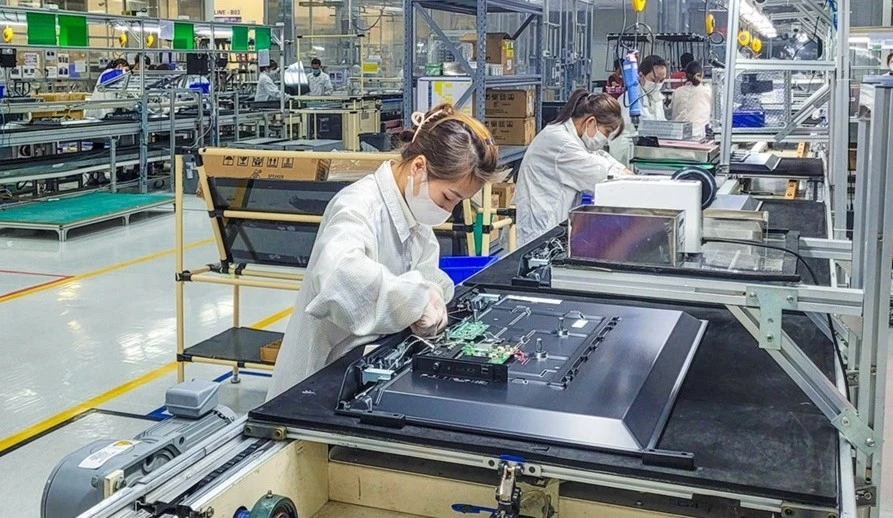
According to the General Statistics Office, in the first two months of the year, Vietnam attracted nearly $6.9 billion in registered FDI, marking a 35.5% increase. Meanwhile, actual disbursed FDI was estimated at $2.95 billion, up 5.4%. The primary investors remain traditional partners from Asia, with South Korea leading the pack with over $1.5 billion in registered capital—5.4 times higher than the same period last year. Following closely are Singapore, China, Japan, and Thailand.
Why Investors Choose Vietnam
Many multinational corporations consider Vietnam a prime destination for foreign direct investment due to several compelling factors. According to Jeong Jihoon, Vice Chairman of the Korean Chamber of Commerce in Vietnam (KOCHAM), one major attraction is the country's commitment to infrastructure development. Vietnam is actively advancing large-scale projects such as high-speed railways, urban rail systems, nuclear power plants, and gas power plants, all of which are crucial for industrial growth and improved connectivity.
Another key factor is the strong government support for innovation. The Vietnamese government offers substantial incentives for research and development activities, particularly in high-tech industries like information technology and semiconductor manufacturing.
Vietnam’s strategic location and well-developed logistics network further enhance its appeal. Its geographical advantages, combined with efficient transportation infrastructure, facilitate seamless trade and supply chain operations. Additionally, stable diplomatic relations help minimize trade barriers and foster a favorable investment climate.
Seck Yee Chung, Vice Chairman of the Singapore Business Association in Vietnam, describes Vietnam as a "rising star in the global economy," attracting increasing attention from investors worldwide. He highlights Vietnam’s strategic location in Southeast Asia, its consistently high GDP growth rates compared to regional counterparts, and its dynamic, educated workforce. Furthermore, the government’s efforts to streamline administrative procedures and implement tax incentives have made it easier for foreign businesses to establish and operate in Vietnam.
Shaping Policies to Attract High-Quality FDI
To shift from a reactive stance to a proactive strategy in attracting FDI, especially high-quality investments, Vietnam is making significant preparations in industrial land allocation and infrastructure development. Additionally, the country has launched initiatives to cultivate a skilled workforce, including training programs aimed at producing 100,000 engineers in the electronics sector and 50,000 in semiconductor technology.
Vietnam is prioritizing the enhancement of its energy infrastructure, particularly in electricity supply, which is essential for large-scale manufacturing operations. To attract major foreign investments, the government has established a dedicated task force to facilitate key projects. Additionally, special investment incentives are being implemented, including preferential tax rates as low as 5% for extended periods of up to 37 years. Companies may also benefit from corporate income tax exemptions for as long as six years, followed by a 50% tax reduction for an additional 13 years.
To qualify for these incentives, investors must meet specific criteria. This includes establishing R&D or innovation centers with an investment exceeding $130 million and disbursing at least $43 million within three years. Projects in priority investment sectors must have a minimum investment of $1.3 billion and allocate at least $435 million within the same timeframe. Additionally, large-scale projects surpassing $1.3 billion must fulfill at least one of the following conditions: utilizing high-tech applications, integrating into global supply chains, engaging in high-value-added production, or transferring technology to Vietnamese enterprises.
Despite Vietnam’s growing appeal, foreign investors caution that the country is not the only player in the regional FDI competition. Thailand, Indonesia, and Malaysia also offer attractive incentives and have well-established industrial zones.
Seck Yee Chung emphasizes that Vietnam must set itself apart through its unique strengths while simultaneously addressing its weaknesses. Simplifying administrative procedures, reducing bureaucratic red tape, and enhancing transparency will be critical to creating a more predictable and efficient investment environment.
KOCHAM representatives stress the need for Vietnam to digitalize administrative processes and upgrade its management systems. Improved coordination between regulatory agencies will accelerate market entry procedures and enhance the ease of doing business for foreign investors.
In response to investor concerns, the Vietnamese government has undertaken substantial regulatory reforms. On March 26, the government issued Resolution No. 66, outlining an ambitious plan to reduce and simplify administrative procedures related to business operations for 2025–2026. The resolution aims to eliminate overlapping business conditions, streamline licensing processes, and enhance transparency, thereby improving the overall investment climate.
This initiative aligns with Vietnam’s broader strategy to integrate more deeply into global markets and solidify its reputation as a stable and attractive destination for high-quality FDI. As the government continues to refine its policies and invest in infrastructure and human capital, Vietnam is well-positioned to capture a larger share of global investment flows and further establish itself as a leading hub for foreign enterprises in Asia.



